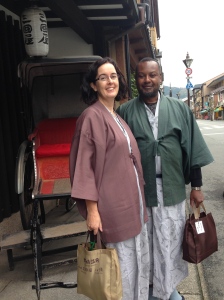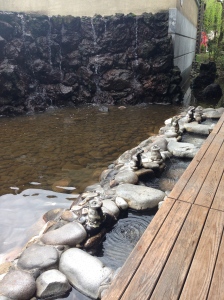I’ve been involved in a fair bit of recruitment recently. In an attempt to challenge my own practices, I’ve also been reading a lot about recruitment bias, and observing how effective or otherwise I’ve been experiencing the different phases of the recruitment process.
I’ve also been asked to provide references for quite a few ex-colleagues in the past months. I’ve never been employed by an organisation that refuses to provide references for previous employees, but I suppose it’s only a matter of time before the friendly phone call and structured Q&A session will be a thing of the past for all of us.
This brings me to a practice I have real difficulty with. It’s common practice in Melbourne, and I believe in much of Australia, for recruiters or employers to mine their networks to get informal references for a preferred candidate before making a final decision. This is usually done without telling the candidate, and is an unofficial step in the recruitment process that the organisation rarely owns up to.
Most of us in the corporate world are subject to a documented formal recruitment procedure that sets out the usual steps: developing a position description, advertising via certain channels, requiring candidates to address key selection criteria, longlisting, shortlisting, interviewing (maybe twice) and perhaps even a formal presentation or psychometric testing to add to the body of evidence for each candidate.
We then get down to a preferred candidate or two, and request the names of some people – usually ex-line managers – who will provide a reference for them.
So far, so predictable.
In a sense the whole references thing is a little pointless, as it would be strange for somebody to give you the contact details of somebody who is not going to give them a glowing reference. But’s it standard practice and very few if any Australian companies are willing to recruit without them.
So because we can, we view the candidate on LinkedIn, read their CV again, see where our networks cross, and make a few quiet phone calls to people we know to see what they know about our potential employee. Too often this part of the process is never declared to the candidate, even after we hire them. It’s then hard not to give the same weight to the opinion of a network contact as we give to the other steps in our official process.
So what, I hear you ask? I know my network, they are trusted sources, and it’s useful to get a different view on a candidate. Culture is important, you argue. It’s critical to hire people who will be a good team fit. We have to be sure.
My argument is two-fold.
Firstly, if we’re going to undertake this practice, we have to be transparent about it. We should write it into our procedures, get Executive sign-off that it’s acceptable and then declare to all candidates up front that we will get feedback about them from whatever mutual acquaintances we can find, without the candidate’s approval or right of reply about our choice of contact. If we are uncomfortable declaring this, or if we find that candidates are unhappy about this, then we have to ask ourselves why.
Secondly and perhaps most importantly, this practice poses the very real danger of limiting our talent pool to more of the same. If we are more inclined to hire candidates who have received the OK from people we know – maybe people we’ve worked with before – then we will turn our company and perhaps even our industry into an echo chamber. Our recruitment processes will rely more on who you know and not what you know. And that’s how things used to be in the bad old days.
Our echo chamber will lock out potential new talent newly arrived from another country, people returning to work after maternity or paternity leave, candidates with amazing transferable skills coming from another industry, young guns trying to get onto the next rung of the ladder. All of these people bring with them the potential to enrich our organisations with new perspectives, different knowledge, and innovative ways of working that will be lost to us if we only hire from the same pool.
Most importantly, this process will limit the diversity of our workforce as we unconsciously filter out all those whose school or university we don’t recognise, whose corporate experience doesn’t intersect with ours, whose name is perhaps difficult to pronounce, whose gender is hard to determine from their first name. And then we’ll spend time wondering what went wrong, and money commissioning a Diversity Strategy to redress the balance.









